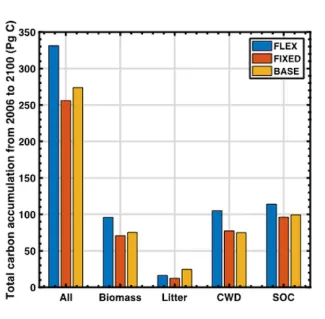Impacts of Stoichiometry Traits on Carbon Accumulation using the E3SM Land Model
Date Published
Plant stoichiometric flexibility controls the CO2 fertilization effect on ecosystem carbon accumulation.
Objective
- Harmonize observed plant tissue C:N:P stoichiometry from more than 6,000 plant species using the Plant Functional Type (PFT) framework common in global land models.
New Science
- The lack of reliable information about plant tissue stoichiometric traits remains a challenge to quantifying nutrient limitations on projected global C cycling.
- Using observed C:N:P stoichiometry and the flexibility of these ratios as emergent plant traits, observationally constrained fixed plant stoichiometry does not improve model estimates of present-day C dynamics compared with unconstrained stoichiometry.
- Adopting stoichiometric flexibility significantly improves model predictions of C fluxes and stocks.
- Twenty-first century simulations with RCP8.5 CO2 concentrations show that stoichiometric flexibility, rather than baseline stoichiometric ratios, is the dominant controller of plant productivity and ecosystem C accumulation in modeled responses to CO2 fertilization.
Impact
- This study is consistent with the previous consensus that nutrient availability will limit future land carbon sequestration but challenges the idea that imbalances between C and nutrient supplies and fixed stoichiometry limit future land C sinks.
- It is necessary to represent nutrient stoichiometric flexibility in models to accurately project future terrestrial ecosystem carbon sequestration.
Citation(s)
Text
Zhu Q, WJ Riley, CM Iversen, and J Kattge. 2020. Assessing impacts of plant stoichiometric traits on terrestrial ecosystem carbon accumulation using the E3SM land model. Journal of Advances in Modeling Earth Systems, accepted. https://doi.org/10.1029/2019MS001841
Funding
This research was supported by the Director, Office of Science, Office of Biological and Environmental Research of the US Department of Energy under Contract No. DE-AC02-05CH11231 as part of the Next-Generation Ecosystem Experiments (NGEE Arctic) project.
For more information, please contact:
Qing Zhu
qzhu@lbl.govWilliam Riley
wjriley@lbl.gov

